Technology
Best Smartwatch Deals: Samsung, Google, Apple, and Garmin
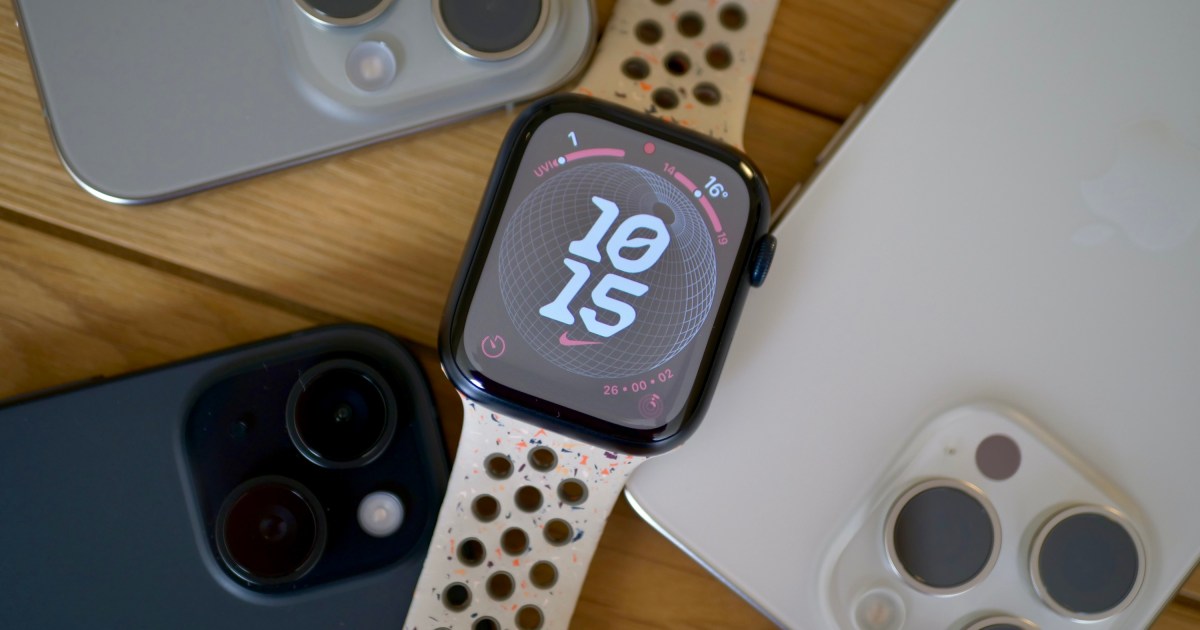
You can almost always count on a smartwatch for some impressive savings, as even the best smartwatches regularly see a discount. The best Apple Watch deals often lead the charge when it comes to smartwatch discounts, but Google Pixel watch deals and Samsung Galaxy Watch deals aren’t far behind. Fitbit deals almost always come in with great starting price points as well. There are a lot of smartwatch deals taking place right now, and to remove any confusion we’ve rounded up the best smartwatch deals below. Reading onward you’ll find great smartwatch savings whether you’re shopping for style or for one of the best fitness trackers.
Google Pixel Watch — $175 $280 37%
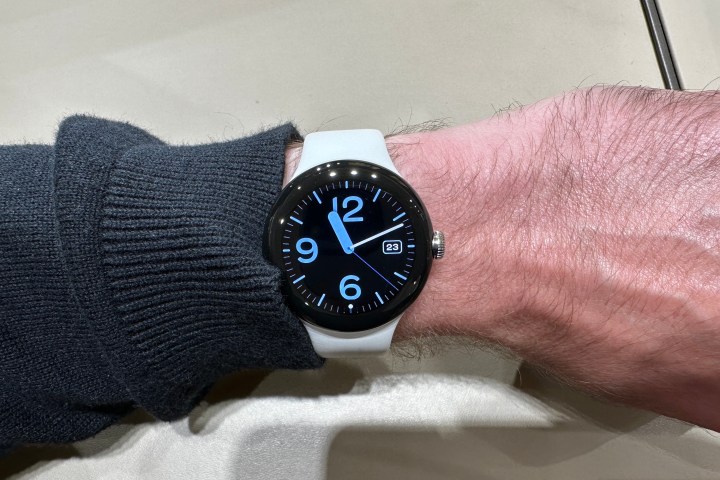
If you’re searching for a new smartwatch and you already own a Google Pixel phone, you might as well grab the Google Pixel Watch. The two obviously make a good pair. The Pixel Watch lets you access your messages and calendar, and even lets you control your other Google smart devices. That means changing the temperature, picking a TV show, or turning on lights just by talking into your wrist. It works with most Android phones, and comes with fitness tracking for 40 different exercises.
Garmin Venu Sq — $180 $200 10% off
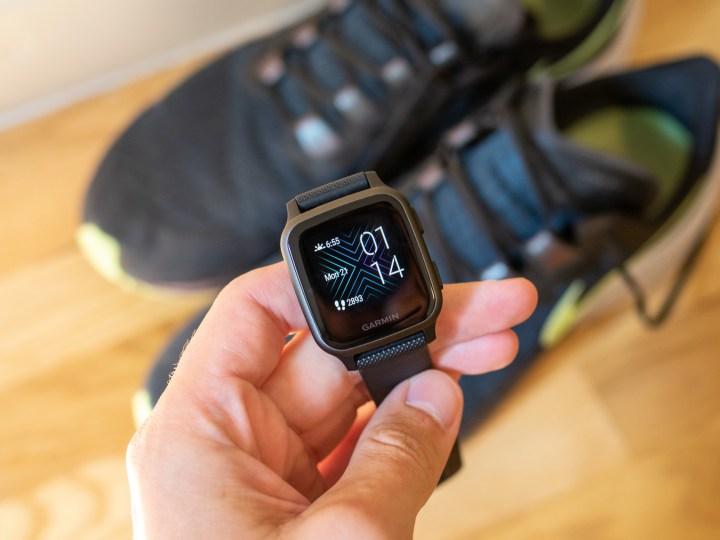
The Garmin Venu Sq smartwatch is a great option for anyone in search of a smartwatch that crosses over between a fitness device and a fashion accessory. It features the broadest range of all-day health monitoring features, which include things like energy level monitoring, respiration and stress tracking, and sleep tracking. You can easily download songs to the Garmin Venu, including playlists from Spotify, Amazon Music or Deezer, as well as other third-party music providers. The Garmin Venu makes great accompaniment when you’re deep into a workout, and its classy, luxurious design looks great when you’re out on the town.
Apple Watch SE 2 — $189 $249 24% off
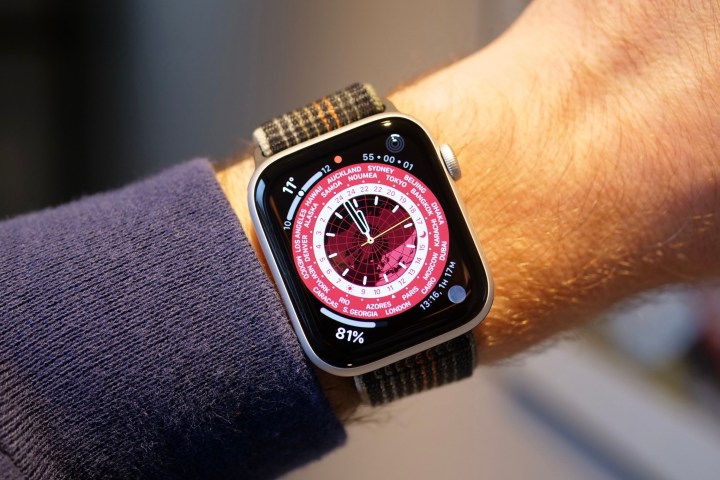
The Apple Watch SE 2 is the second iteration of Apple’s entry-level smartwatch. It rivals some higher end models in terms of capability, and includes all of the tracking and fitness features the Apple software ecosystem is famous for. This includes features like crash detection, fall detection, and emergency SOS, as well as fitness monitoring and health tracking software. It works seamlessly with your Apple devices and services, and can unlock your Mac automatically, help you find your devices with a tap, pay and send money with Apple Pay, and give you access to thousands of apps on the App Store.
Samsung Galaxy Watch 6 Classic — $198 $227 13%

The Samsung Galaxy Watch 6 Classic is the premium version of the Samsung Galaxy Watch 6. While both models share health and fitness tracking capabilities, the Samsung Galaxy Watch 6 Classic looks more like a traditional watch with its stainless steel case compared to the sporty look of the Samsung Galaxy Watch 6, and it also keeps the rotating bezel that you’ll use to navigate its interface. Our Samsung Galaxy Watch 6 Classic versus Samsung Galaxy Watch 6 comparison highlights more differences, so feel free to check it out.
Samsung Galaxy Watch 5 Pro (45mm) — $238 $500 52% off
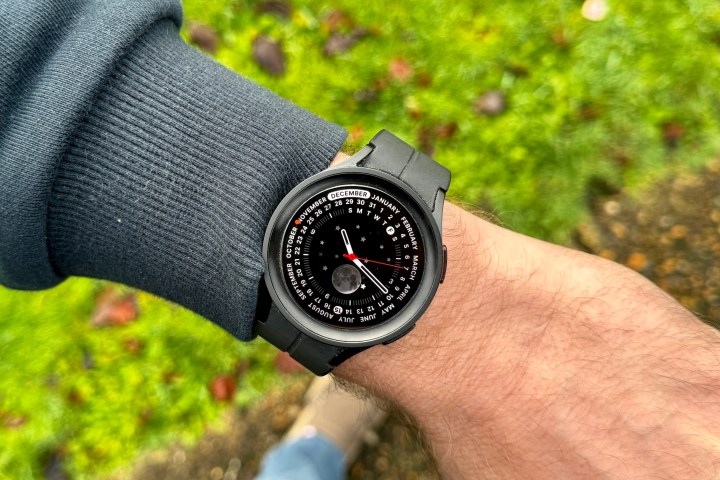
The Samsung Galaxy Watch 5 Pro has been on the market for a couple of years, but it still holds well as smartwatches go. Key features include advanced sleep coaching, start of the art accuracy, wellness readings, and the ability to track a variety of outdoor adventures. The Samsung Galaxy Watch 5 lineup in general currently makes for some of the best smartwatch deals you’ll find. This Galaxy Watch 5 Pro model offers great value at this price, as it’s still a relatively new smartwatch.
Apple Watch Series 9 (GPS, 45mm) — $599 $749 20%off

The Apple Watch Series 9 is the best smartwatch for the iPhone, according to our roundup of the best smartwatches, with its extensive health, fitness, and safety features combined with fast and smooth performance. You also wouldn’t want any other wearable device with your iPhone because it’s very easy to pair it with the Apple Watch Series 9. You won’t mind wearing the smartwatch the whole day because it’s extremely comfortable on your wrist, and Apple’s S9 chip enables new capabilities such as processing Siri commands locally on the Apple Watch Series 9.
More smartwatch deals we love

If none of the smartwatch deals above excite you, check out the other amazing offers that we’ve come across. There’s something for everyone, ranging from cheaper previous-generation models to premium wearable devices, so at least one of these bargains should catch your eye. Once that happens, you’re going to have to proceed with the transaction as soon as possible because we’re not sure how much time is remaining on these discounts.
- — $110
$15027% off - — $153
$20024% off - — $180
$25028% off - — $200
$35043% off
How we chose the best smartwatch deals
There are a lot of smartwatches on the market, and while that can make finding a smartwatch deals pretty easy, it can make narrowing the best smartwatch deals down a little more difficult. Top brands like Garmin, Apple, Google, and Samsung pretty much always have numerous smartwatch models discounted across retailers. Big brands like these are, of course, the most popular among shoppers, so we make a point of including at least one model from each of these in our selections for the best smartwatch deals.
Smartwatches, really, are some of the most discounted pieces of tech you can find out there. Those top brands mentioned above generally keep older generations of their smartwatches on the market alongside their new releases, and that opens up all sorts of room for smartwatch deals. Smartwatches such as the Apple Watch SE, Apple Watch Series 8, Samsung Galaxy Watch 5, and numerous Fitbit models are at least a generation old and the perfect candidates to see some major discounts. They’re also regulars among the best smartwatch deals.
And while pricing and availability are the two most important factors when we choose the best smartwatch deals, style is something we consider as well. Some people are looking for a smartwatch to look good, while others are in the market for something to help with their fitness routine. Brands recognize this and tailor certain smartwatch models to each. When we make our selections for the best smartwatch deals we try to keep a nice balance between the two and provide a number of discounted smartwatches for different tastes.
Technology
Your files could be a conversation starter for Gemini Live
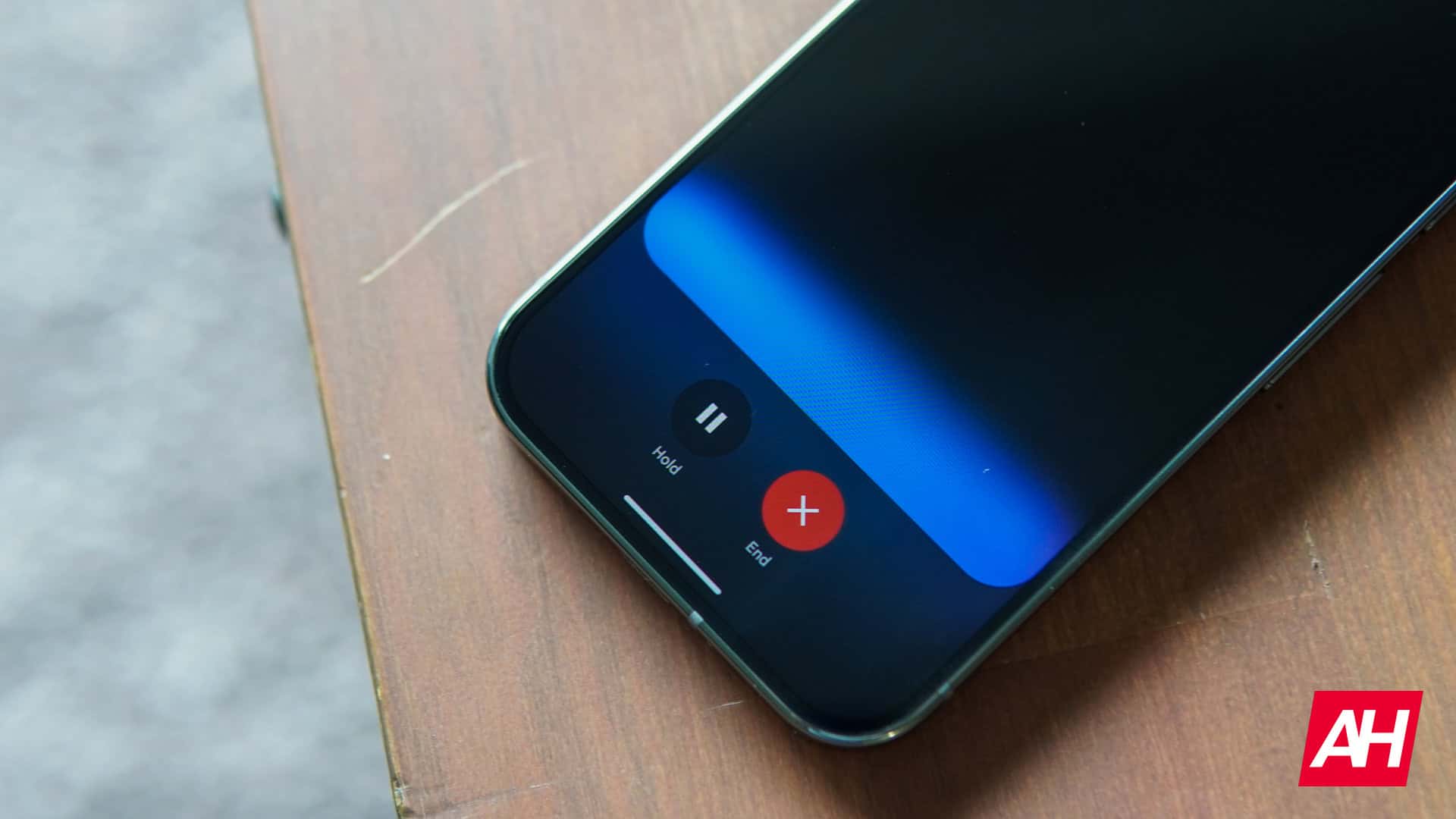
Gemini Live is now out for the general public to use, and it’s one of Google’s most advanced AI tools. However, it’s not much more than a friendly voice to answer your general questions. This could change, according to a new report. Gemini Live might talk to you about your files sometime soon.
In case you don’t know what Gemini Live is, here’s a refresher. Google recently released this feature for free Gemini users. It’s a much more conversational version of Gemini. It will give you answers and talk to you in a very human manner. It strives to break the barrier between human beings and AI voices, however unsettling that may be.
To use Gemini Live, make sure that your Gemini app is fully updated. After that, either open the app or summon Gemini using the hot word. You’ll see a little waveform icon on the bottom right of the screen. Once you tap that option, Gemini Live will activate and let you choose your voice.
Gemini Live could eventually talk about your files
You can upload files to Gemini to read through, but you could only interact with them in the main Gemini app. When it comes to Gemini Live, you’re not really able to do much outside of having a conversation. However, thanks to a new APK deep-dive, it looks like Google wants Gemini to look at your files.
Since this news is from an APK deep dive, you’ll want to take it cautiously. Google placed code in the current version of the Google app that hints at new features, but it doesn’t guarantee that it will implement them. There’s always the chance that the company will shelf them before the official launch.
The deep dive, performed by AssembleDebug (in collaboration with Android Authority), shows some strings hidden within the 15.45.33.ve.arm64 beta of the Google app.
<string name=”assistant_zero_state_suggestions_open_live_snippet_highlight”>Open Live</string>
<string name=”assistant_zero_state_suggestions_open_live_snippet_simplified”>Talk about attachment</string>
<string name=”assistant_zero_state_suggestions_open_live_text”>Open Live with attachment</string>
These strings point to Google letting Gemini Live look through the files you uploaded. With this feature enabled, you’ll be able to have a conversation about the media you uploaded. This could have some major implications.
Imagine uploading a PDF of a textbook and having a 1-on-1 conversation about the media in it with Gemini Live. It’ll be like having your own tutor. That’s only one possibility. Who knows how this could help make Gemini Live more useful?
Technology
Cadillac reveals the 2026 Vistiq EV SUV

Cadillac is adding to its fleet of EVs with a new luxury SUV. is a three-row, all-electric SUV that will hit showrooms and dealerships sometime next summer with a starting price of $78,790.
The Vistiq’s dual-motor, all-wheel drive system runs on a 102 kWh battery pack with a range of 300 miles that produces 615 horsepower and 650 pound-feet of torque. The Vistiq also supports vehicle-to-home (V2H) bidirectional charging capabilities: it can charge at home, and also deliver electricity to your house during a power outage. Using the features requires buying the GM Energy V2H bundle though.
The SUV’s design borrows aesthetically from other Cadillac EVs. Like the , it has flush door handles, and features similar looking lights and side panels. It also matches the Lyriq’s 300 mile range. The “swept-back windshield” and “Black Crystal Shield grill” evoke the Escalade IQ.
Of course, the Vistiq’s power and price are different from its Cadillac EV’s. The new Cadillac EV SUV is less expensive than an Escalade IQ ($129,990) but more than a Lyriq ($58,595), and the has a higher peak battery range at 450 miles.
The Vistiq comes with a 23-speaker AKG7 Studio Audio system with Dolby Atmos. The Android-powered infotainment system is baked into a 33-inch high resolution LED display. The Verge also that the new EV’s navigation system uses Google Maps and can run other apps from the Google Play Store.
Apple CarPlay and Android Auto won’t be available in Cadillac’s newest EV. is phasing out Apple CarPlay and Android Auto from its EVs and plans to go with Android Automotive. GM’s Executive Director of Digital Cockpit Experience Edward Kummer said in that the carmaker didn’t want any features in its EVs “that are dependent on a person having a cellphone.”
Science & Environment
Study finds great white sharks less likely to attack surfboards with bright lights: “Like an invisibility cloak”

Covering your surfboard in bright lights sounds like an open invitation to great white sharks, but research released Tuesday by Australian scientists found it might actually stave off attacks.
Biologist Laura Ryan said the predator often attacked its prey from underneath, occasionally mistaking a surfer’s silhouette for the outline of a seal.
Ryan and her fellow researchers showed that seal-shaped boards decked with bright horizontal lights were less likely to be attacked by great white sharks.
This appeared to be because the lights distorted the silhouette on the ocean’s surface, making it appear less appetizing.
“There is this longstanding fear of white sharks and part of that fear is that we don’t understand them that well,” said Ryan, from Australia’s Macquarie University.
The study, published in the journal Current Biology, was conducted in the waters of South Africa’s Mossel Bay, a popular great white feeding ground.
Seal-shaped decoys were strung with different configurations of LED lights and towed behind a boat to see which attracted the most attention.
Brighter lights were better at deterring sharks, the research found, while vertical lights were less effective than horizontal.
Macquarie University Professor Nathan Hart, one of the study’s authors, said the lights caused a “complex interaction” with the shark’s behavior.
“It’s like an invisibility cloak but with the exception that we are splitting the object, the visual silhouette, into smaller bits,” Hart said.
The study’s authors released a video showing some of the research in action.
Ryan said the results were better than expected and is now in the process of building prototypes for use on the underside of kayaks and surfboards.
Australia has some of the world’s most comprehensive shark management measures, including monitoring drones, shark nets and a tagging system that alerts authorities when a shark is near a crowded beach.
Ryan said her research could allow less invasive mitigation methods to be used.
More research was needed to see if bull and tiger sharks — which have different predatory behavior — responded to the lights in a similar way, the authors said.
There have been more than 1,200 shark incidents in Australia since 1791, of which 255 resulted in death, official data shows.
Great white sharks were responsible for 94 of those deaths.
The overall number of deadly shark attacks worldwide in 2023 remained relatively low, but it was still twice the previous year’s total, according to the latest iteration of the International Shark Attack File — a database of global shark attacks run by the University of Florida.
The report noted that a “disproportionate” amount of people died from shark bites in Australia last year compared with other countries around the world.
Technology
Snowflake’s ‘data agents’ leverage enterprise apps so you don’t have to

Join our daily and weekly newsletters for the latest updates and exclusive content on industry-leading AI coverage. Learn More
Today, data ecosystem giant Snowflake kicked off its BUILD developer conference with the announcement of a special new offering: Snowflake Intelligence.
Set to launch in private preview soon, Snowflake Intelligence is a platform that will help enterprise users set up and deploy dedicated ‘data agents’ to extract relevant business insights from their data, hosted within their data cloud instance and beyond, and then use those insights to take actions across different tools and applications, like Google Workspace and Salesforce.
The move comes as the rise of AI agents continues to be a prominent theme in the enterprise technology landscape, with both nimble startups and large-scale enterprises (like Salesforce) adopting them. It will further strengthen Snowflake’s position in the data domain, leaving the ball in rival Databricks’ court to come back with something bigger.
However, it is important to note that Snowflake isn’t the very first company to toy with the idea of AI agents for improved data operations.
Other startups including Redbird, Altimate AI and Connecty AI, are also exploring with the idea of agents to help users better manage and extract value (in the form of AI and analytical applications) from their datasets. One key benefit of Snowflake’s is that the agent creation and deployment platform will live within the same cloud data warehouse or lakehouse provider, eliminating the need for another tool.
What to expect from Snowflake’s data agents?
Ever since Neeva AI CEO Sridhar Ramaswamy took over as CEO, Snowflake has been integrating AI capabilities on top of its core data platform to help customers take advantage of all their datasets, without running into technical complexities.
From the Document AI feature launched last year to help teams extract data from their unstructured documents and to fully-managed open LLM solution Cortex AI to Snowflake Copilot, an assistant built with Cortex to write SQL queries in natural language and extract insights from data, Snowflake has been busy adding such AI features.
However, until now, the AI smarts were only limited to working with the data hosted within users’ respective Snowflake instances, not other sources.
How Snowflake Intelligence data agents work
With the launch of Snowflake Intelligence, the company is expanding these capabilities, giving teams the option to set up enterprise-grade data agents that could tap not only business intelligence data stored in their Snowflake instance, but also structured and unstructured data across siloed third-party tools — such as sales transactions in a database, documents in knowledge bases like SharePoint, information in tools like Slack, Salesforce, and Google Workspace.
According to the company, the platform, underpinned by Cortex AI’s capabilities, integrates different data systems with a single governance layer and then uses Cortex Analyst and Cortex Search (part of Cortex AI architecture) to deploy agents that accurately retrieve and process specific data assets from both unstructured and structured data sources to provide relevant insights.
The users interact with the agents in natural language, asking business-related questions covering different subjects, while the agents identify the relevant internal and external data sources, covering data types like PDFs, tables, etc., for those subjects and run analysis and summarization jobs to provide answers.
But that’s not all. Once the relevant data is surfaced, the user can ask the data agents to go a step further and take specific actions around the generated insights.
For instance, a user can ask their data agent to enter the surfaced insights into an editable form and upload the file to their Google Drive. The agent would immediately analyze the query, plan and make required API function calls to connect to the relevant tools and execute the task. It can even be used for writing to Snowflake tables and making data modifications.

We’ve reached out to Snowflake with specific questions about these data agents, including the breadth of data sources they can cover and tasks they can (or cannot) execute, but have not heard from the company at the time of writing.
It also remains to be seen how quickly and easily users can create and set up these data agents. For now, the company has only said it only takes a “few steps” to deploy them.
Baris Gultekin, the head of AI at Snowflake says the unified platform “represents the next step in Snowflake’s AI journey, further enabling teams to easily, and safely, advance their businesses with data-driven insights they can act on to deliver measurable impact.”
No word on widespread availability
While the idea of having agents that could answer questions about business data and then take specific actions with the generated insights to do organizational work sounds very tempting, it is pertinent to note that the capability has just been announced yet.
Snowflake has not given a timeline on its availability. It only says that the unified platform will go into private preview very soon.
However, the competition is intensifying fast, including from AI model provider startups such as Anthropic with its new Computer Use mode, giving users more options to choose from when it comes to turning autonomous agents loose on business data, and completing tasks from a user’s text prompt instructions.
The company also notes that Snowflake Intelligence will be natively integrated with the company’s Horizon Catalog at the foundation level, allowing users to run agents for insights right where they discover, manage and govern their data assets. It will be compatible with both Apache Iceberg and Polaris, the company added.
Snowflake BUILD runs from November 12 to 15, 2024.
Source link
Science & Environment
Jets of liquid bounce off hot surfaces without ever touching them


If you cook with stainless steel pans, you’re probably familiar with the Leidenfrost effect
Franck Celestini
A jet of liquid can bounce off of a hot plate without ever touching it. This extension of the Leidenfrost effect – the phenomenon that allows beads of water to skitter across a scorching pan – could help improve cooling processes, from nuclear reactors to firefighting.
Though first described nearly 300 years ago, the Leidenfrost effect has only been tested with fluid droplets, not squirts of liquid. Until now.
Frack Celestini at Côte d’Azur…
Technology
Particle launches an AI news app to help publishers, instead of just stealing their work
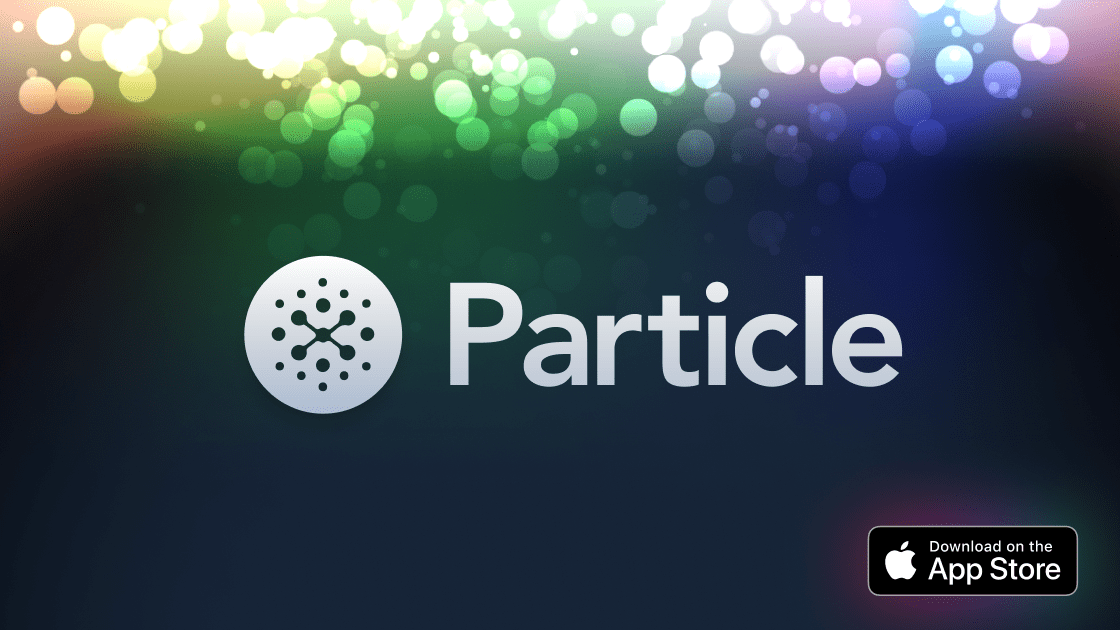
The media industry today may not have a very favorable view of AI — a technology that’s already been used to replace reporters with AI-written copy, while other AI companies have scooped up journalists’ work to feed their chatbots’ data demands, but without returning traffic to the publisher as search engines once did. However, one startup, an AI newsreader called Particle from former Twitter engineers, believes that AI could serve a valuable role in the media industry by helping consumers make sense of the news and dig deeper into stories, while still finding a way to support the publishers’ businesses.
Backed by $4.4 million in seed funding and a $10.9 million Series A led by Lightspeed, Particle was founded last year by the former senior director of Product Management at Twitter, Sara Beykpour, who worked on products like Twitter Blue, Twitter Video, and conversations, and who spearheaded the experimental app, twttr. Her co-founder is a former senior engineer at Twitter and Tesla, Marcel Molina.
From the consumers’ perspective, the core idea behind Particle is to help readers better understand the news with the help of AI technology. More than just summarizing stories into key bullet points for quick catch-ups, Particle offers a variety of clever features that let you approach the news in different ways.

But instead of simply sucking up publishers’ work for its own use, Particle aims to compensate publishers or even drive traffic back to news sites by prominently showcasing and linking to sources directly underneath its AI summaries.
To start, Particle has partnered with specific publishers to host some of their content in the app via their APIs, including outlets like Reuters, AFP, and Fortune. These partners receive better positioning and their links are highlighted in gold above others.

Already, beta tests indicate that readers are clicking through to publishers’ sites because of the app’s design and user interface, though that could shift now that the app is launching beyond news junkies to the general public. In time, the company intends to introduce other ways to work with the media, too, in addition to sending them referral traffic. The team is also having discussions with publishers about providing its users access to paywalled content in a way that makes sense for all parties.
“Having deep partnerships and collaboration is one of the things that we’re really interested in,” notes Beykpour.
To help with its traffic referral efforts, the app’s article section includes big tap targets, making it easy for readers to click through to the publisher’s site. Plus, Particle includes the faces of the journalists on their bylines, and readers can follow through links to publisher profiles to read more of their content or follow them.
Using the app’s built-in AI tools, news consumers can switch between different modes like “Explain Like I’m 5,” to get a simplified version of a complicated story or those that summarize “just the facts,” (or the 5W’s — who, what, when, where, and why). You can have the news summarized in another language besides English, or listen to an audio summary of a story or a personalized selection of stories while on the go. Particle can also pull out important quotes from a story and other links of reference.

But two of the more interesting features involve how Particle leverages AI to help present the news from different angles and allows you to further engage with the story at hand by asking questions.
In Particle, one tool called “Opposite Sides” aims to break users’ filter bubbles by presenting different viewpoints from the same story. This model has been tried before by other news apps, including the startup Brief and SmartNews. Unlike earlier efforts, Particle includes a story spectrum that shows how news is being reported across both “red” and “blue”-leaning sites, with bubbles placed to indicate how far to the left or right the news’ positioning is, and how outsized the coverage may be from one side or the other. The AI will also summarize both sides’ positions, allowing news consumers to reach their own opinions about the matter.

However, the app’s killer feature is an AI chatbot that lets you ask questions and get instant answers about a story. The app will include suggested questions and those asked by others. For example, if you’re reading about Trump’s immigration policy plans, you could ask the chatbot things like “What are the potential legal challenges to Trump’s deportation plans?” or “What are the potential costs of mass deportation?” among other things. Particle will then use its AI technology to find those answers and fact-check them for accuracy.
“The chat function uses OpenAI as well as…our own pre-processing and post-processing,” explains Beykpour, in an interview with TechCrunch. “It uses the content, searches the web a little bit — if it wants to find extra information on the web — to generate those answers.” She says that after the answer is generated, Particle includes an extra step where the AI has to go find the supporting material that matches those answers.
Overall, the app encompasses tech like OpenAI’s GPT-4o and GPT-4o mini, Anthropic, Cohere, and others, including more traditional AI technologies, which are not LLM-based, from Google.
“We have a processing pipeline that takes related content and summarizes it into bullet points, into a headline, sub-headline, and does all the extractions,” she continues. “Then…we pull out quotes and links and all sorts of relevant information about [the story]. And we have our own algorithms to rank, so that the most important or relevant link is the one that you see first — or what we think is the most important or relevant quote is the one that you see first.”
The company claims that its technology reduces AI accuracy problems that would otherwise occur one out of 100 times, and reduces their likelihood to one out of 10,000 times.
Particle will also use human editors as it grows to help better manage the AI content and curate its homepage, she notes.
The app is a free download on iOS for the time being and works across iPhone and iPad.
TechCrunch has an AI-focused newsletter! Sign up here to get it in your inbox every Wednesday.
-

 Science & Environment2 months ago
Science & Environment2 months agoHow to unsnarl a tangle of threads, according to physics
-

 Technology2 months ago
Technology2 months agoWould-be reality TV contestants ‘not looking real’
-

 Technology2 months ago
Technology2 months agoIs sharing your smartphone PIN part of a healthy relationship?
-

 Science & Environment2 months ago
Science & Environment2 months agoHyperelastic gel is one of the stretchiest materials known to science
-

 Science & Environment2 months ago
Science & Environment2 months ago‘Running of the bulls’ festival crowds move like charged particles
-

 Science & Environment2 months ago
Science & Environment2 months agoX-rays reveal half-billion-year-old insect ancestor
-

 Science & Environment2 months ago
Science & Environment2 months agoPhysicists have worked out how to melt any material
-

 MMA1 month ago
MMA1 month ago‘Dirt decision’: Conor McGregor, pros react to Jose Aldo’s razor-thin loss at UFC 307
-

 News1 month ago
News1 month ago‘Blacks for Trump’ and Pennsylvania progressives play for undecided voters
-

 Sport1 month ago
Sport1 month agoAaron Ramsdale: Southampton goalkeeper left Arsenal for more game time
-

 News1 month ago
News1 month agoWoman who died of cancer ‘was misdiagnosed on phone call with GP’
-

 Money1 month ago
Money1 month agoWetherspoons issues update on closures – see the full list of five still at risk and 26 gone for good
-

 Football1 month ago
Football1 month agoRangers & Celtic ready for first SWPL derby showdown
-
Business1 month ago
how UniCredit built its Commerzbank stake
-

 Technology1 month ago
Technology1 month agoUkraine is using AI to manage the removal of Russian landmines
-

 Sport1 month ago
Sport1 month ago2024 ICC Women’s T20 World Cup: Pakistan beat Sri Lanka
-

 Science & Environment2 months ago
Science & Environment2 months agoMaxwell’s demon charges quantum batteries inside of a quantum computer
-

 Science & Environment2 months ago
Science & Environment2 months agoSunlight-trapping device can generate temperatures over 1000°C
-

 Science & Environment2 months ago
Science & Environment2 months agoA new kind of experiment at the Large Hadron Collider could unravel quantum reality
-

 Science & Environment2 months ago
Science & Environment2 months agoLiquid crystals could improve quantum communication devices
-

 Technology1 month ago
Technology1 month agoSamsung Passkeys will work with Samsung’s smart home devices
-

 Science & Environment2 months ago
Science & Environment2 months agoLaser helps turn an electron into a coil of mass and charge
-

 Science & Environment2 months ago
Science & Environment2 months agoQuantum forces used to automatically assemble tiny device
-
Business1 month ago
Top shale boss says US ‘unusually vulnerable’ to Middle East oil shock
-

 News1 month ago
News1 month agoMassive blasts in Beirut after renewed Israeli air strikes
-

 Science & Environment2 months ago
Science & Environment2 months agoWhy this is a golden age for life to thrive across the universe
-

 Technology2 months ago
Technology2 months agoRussia is building ground-based kamikaze robots out of old hoverboards
-

 Technology1 month ago
Technology1 month agoGmail gets redesigned summary cards with more data & features
-

 MMA1 month ago
MMA1 month agoPereira vs. Rountree prediction: Champ chases legend status
-

 Science & Environment2 months ago
Science & Environment2 months agoQuantum ‘supersolid’ matter stirred using magnets
-

 News1 month ago
News1 month agoNavigating the News Void: Opportunities for Revitalization
-

 News1 month ago
News1 month agoCornell is about to deport a student over Palestine activism
-

 Sport1 month ago
Sport1 month agoBoxing: World champion Nick Ball set for Liverpool homecoming against Ronny Rios
-

 Entertainment1 month ago
Entertainment1 month agoBruce Springsteen endorses Harris, calls Trump “most dangerous candidate for president in my lifetime”
-

 Technology1 month ago
Technology1 month agoEpic Games CEO Tim Sweeney renews blast at ‘gatekeeper’ platform owners
-

 Technology1 month ago
Technology1 month agoSingleStore’s BryteFlow acquisition targets data integration
-

 Business1 month ago
Business1 month agoWater companies ‘failing to address customers’ concerns’
-

 MMA1 month ago
MMA1 month agoDana White’s Contender Series 74 recap, analysis, winner grades
-

 MMA1 month ago
MMA1 month agoPennington vs. Peña pick: Can ex-champ recapture title?
-

 Sport1 month ago
Sport1 month agoShanghai Masters: Jannik Sinner and Carlos Alcaraz win openers
-

 Technology2 months ago
Technology2 months agoMeta has a major opportunity to win the AI hardware race
-

 Science & Environment2 months ago
Science & Environment2 months agoITER: Is the world’s biggest fusion experiment dead after new delay to 2035?
-

 Technology1 month ago
Technology1 month agoMicrophone made of atom-thick graphene could be used in smartphones
-

 Money1 month ago
Money1 month agoTiny clue on edge of £1 coin that makes it worth 2500 times its face value – do you have one lurking in your change?
-

 Technology1 month ago
Technology1 month agoMicrosoft just dropped Drasi, and it could change how we handle big data
-

 Sport1 month ago
Sport1 month agoWXV1: Canada 21-8 Ireland – Hosts make it two wins from two
-

 MMA1 month ago
MMA1 month ago‘Uncrowned queen’ Kayla Harrison tastes blood, wants UFC title run
-

 Football1 month ago
Football1 month ago'Rangers outclassed and outplayed as Hearts stop rot'
-

 Technology1 month ago
Technology1 month agoLG C4 OLED smart TVs hit record-low prices ahead of Prime Day
-

 Sport1 month ago
Sport1 month agoAmerica’s Cup: Great Britain qualify for first time since 1964
-

 MMA1 month ago
MMA1 month agoKayla Harrison gets involved in nasty war of words with Julianna Pena and Ketlen Vieira
-

 News1 month ago
News1 month agoHarry vs Sun publisher: ‘Two obdurate but well-resourced armies’
-

 News2 months ago
News2 months ago▶️ Hamas in the West Bank: Rising Support and Deadly Attacks You Might Not Know About
-

 Technology2 months ago
Technology2 months agoWhy Machines Learn: A clever primer makes sense of what makes AI possible
-

 Technology1 month ago
Technology1 month agoUniversity examiners fail to spot ChatGPT answers in real-world test
-

 News1 month ago
News1 month agoRwanda restricts funeral sizes following outbreak
-

 Technology1 month ago
Technology1 month agoCheck, Remote, and Gusto discuss the future of work at Disrupt 2024
-

 Sport1 month ago
Sport1 month agoURC: Munster 23-0 Ospreys – hosts enjoy second win of season
-
Travel1 month ago
World of Hyatt welcomes iconic lifestyle brand in latest partnership
-

 TV1 month ago
TV1 month agoসারাদেশে দিনব্যাপী বৃষ্টির পূর্বাভাস; সমুদ্রবন্দরে ৩ নম্বর সংকেত | Weather Today | Jamuna TV
-

 Business1 month ago
Business1 month agoWhen to tip and when not to tip
-

 News1 month ago
News1 month agoHull KR 10-8 Warrington Wolves – Robins reach first Super League Grand Final
-

 MMA1 month ago
MMA1 month agoHow to watch Salt Lake City title fights, lineup, odds, more
-
Business1 month ago
Italy seeks to raise more windfall taxes from companies
-

 Science & Environment2 months ago
Science & Environment2 months agoNuclear fusion experiment overcomes two key operating hurdles
-

 Science & Environment2 months ago
Science & Environment2 months agoA slight curve helps rocks make the biggest splash
-

 Science & Environment2 months ago
Science & Environment2 months agoNerve fibres in the brain could generate quantum entanglement
-

 Sport1 month ago
Sport1 month agoPremiership Women’s Rugby: Exeter Chiefs boss unhappy with WXV clash
-

 Sport1 month ago
Sport1 month agoFans say ‘Moyes is joking, right?’ after his bizarre interview about under-fire Man Utd manager Erik ten Hag goes viral
-
Politics1 month ago
‘The night of the living dead’: denial-fuelled Tory conference ends without direction | Conservative conference
-

 Technology1 month ago
Technology1 month agoNintendo’s latest hardware is not the Switch 2
-

 Science & Environment2 months ago
Science & Environment2 months agoA tale of two mysteries: ghostly neutrinos and the proton decay puzzle
-
Business1 month ago
The search for Japan’s ‘lost’ art
-

 Sport1 month ago
Sport1 month agoNew Zealand v England in WXV: Black Ferns not ‘invincible’ before game
-
Business1 month ago
It feels nothing like ‘fine dining’, but Copenhagen’s Kadeau is a true gift
-

 TV1 month ago
TV1 month agoTV Patrol Express September 26, 2024
-

 Football1 month ago
Football1 month agoFifa to investigate alleged rule breaches by Israel Football Association
-

 News1 month ago
News1 month ago▶ Hamas Spent $1B on Tunnels Instead of Investing in a Future for Gaza’s People
-

 Sport1 month ago
Sport1 month agoHow India became a Test cricket powerhouse
-

 Sport1 month ago
Sport1 month agoSnooker star Shaun Murphy now hits out at Kyren Wilson after war of words with Mark Allen
-

 Technology1 month ago
Technology1 month agoMusk faces SEC questions over X takeover
-

 Football1 month ago
Football1 month agoWhy does Prince William support Aston Villa?
-

 News2 months ago
News2 months ago▶️ Media Bias: How They Spin Attack on Hezbollah and Ignore the Reality
-

 Womens Workouts2 months ago
Womens Workouts2 months ago3 Day Full Body Women’s Dumbbell Only Workout
-

 News1 month ago
News1 month agoCrisis in Congo and Capsizing Boats Mediterranean
-
Business1 month ago
Bank of England warns of ‘future stress’ from hedge fund bets against US Treasuries
-

 Money1 month ago
Money1 month agoThe four errors that can stop you getting £300 winter fuel payment as 880,000 miss out – how to avoid them
-

 Sport1 month ago
Sport1 month agoChina Open: Carlos Alcaraz recovers to beat Jannik Sinner in dramatic final
-

 Sport1 month ago
Sport1 month agoSturm Graz: How Austrians ended Red Bull’s title dominance
-

 Sport1 month ago
Sport1 month agoBukayo Saka left looking ‘so helpless’ in bizarre moment Conor McGregor tries UFC moves on Arsenal star
-

 Sport1 month ago
Sport1 month agoCoco Gauff stages superb comeback to reach China Open final
-

 Technology1 month ago
Technology1 month agoSamsung Galaxy Tab S10 won’t get monthly security updates
-

 Technology1 month ago
Technology1 month agoJ.B. Hunt and UP.Labs launch venture lab to build logistics startups
-

 Money1 month ago
Money1 month agoDWP reveals exact date that cold weather payments will start this winter – can you get free cash for your energy bills?
-

 Sport1 month ago
Sport1 month agoPhil Jones: ‘I had to strip everything back – now management is my focus’
-

 Technology1 month ago
Technology1 month agoQuoroom acquires Investory to scale up its capital-raising platform for startups
-

 MMA1 month ago
MMA1 month agoStephen Thompson expects Joaquin Buckley to wrestle him at UFC 307
-

 News1 month ago
News1 month agoGerman Car Company Declares Bankruptcy – 200 Employees Lose Their Jobs
-

 MMA1 month ago
MMA1 month ago‘I was fighting on automatic pilot’ at UFC 306
-

 News1 month ago
News1 month agoTrump returns to Pennsylvania for rally at site of assassination attempt

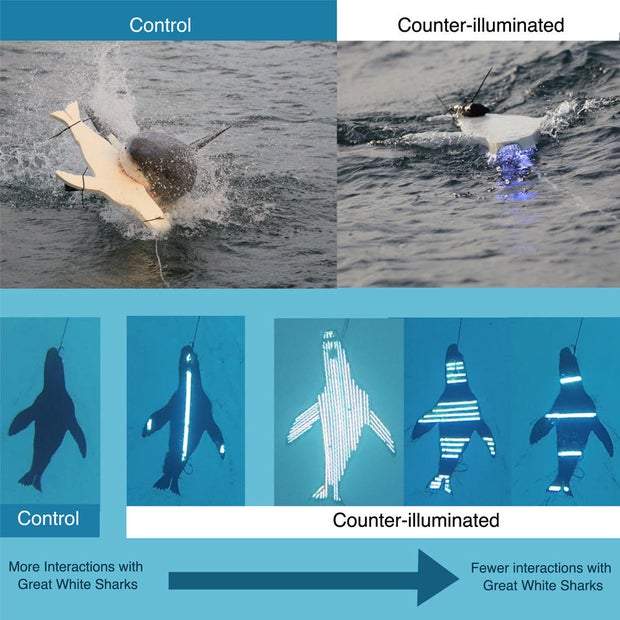
You must be logged in to post a comment Login